Your basil will thrive when paired with these plants – we reveal the best companions, plus the ones to avoid
The best basil companion plants, approved by experts
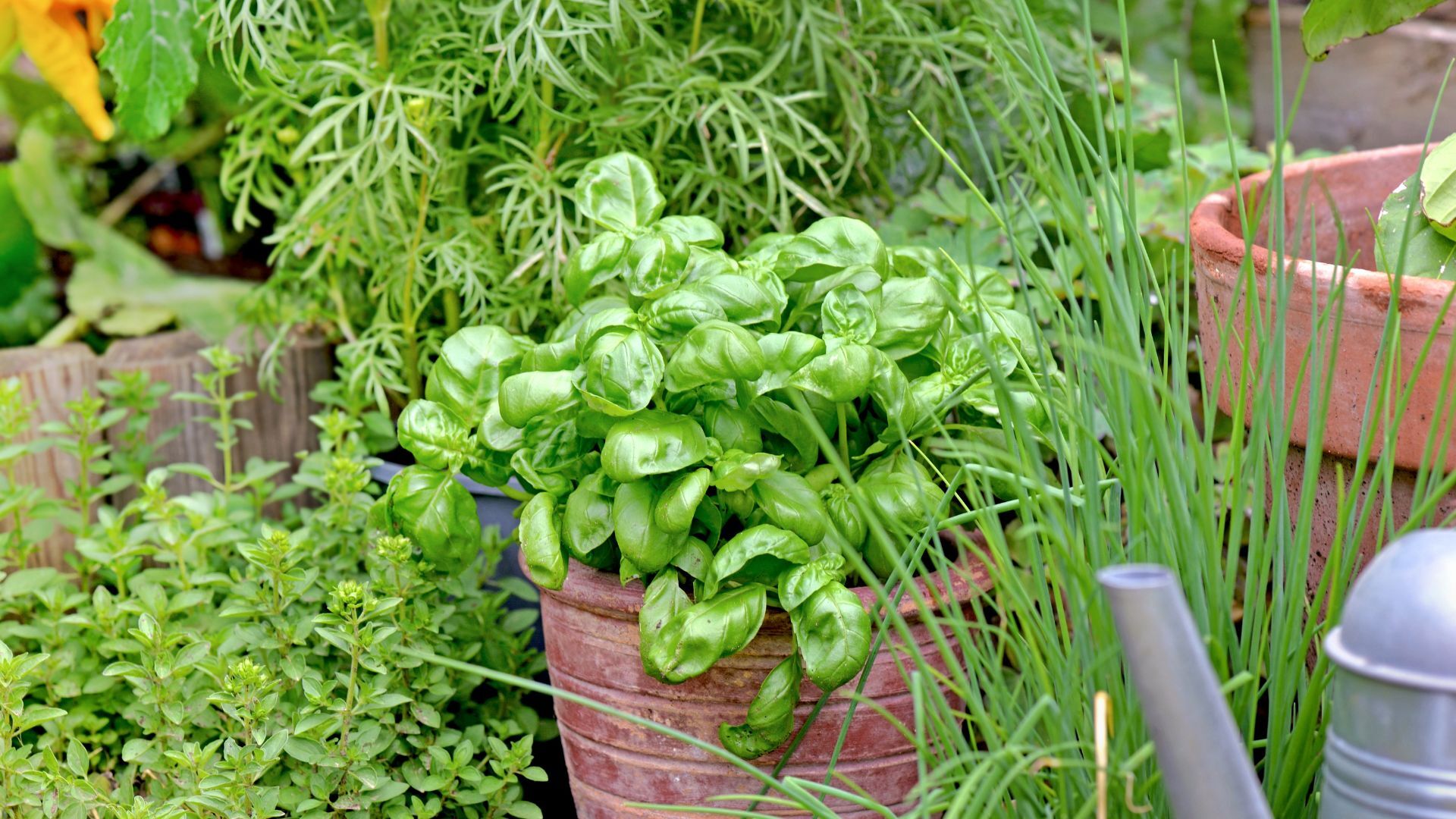

As the summer sun intensifies and alfresco meals become a staple, basil (Ocimum basilicum) takes center stage in countless seasonal dishes - whether torn over fresh tomatoes, tossed through salads, or muddled into summer cocktails. Yet for all its culinary appeal, basil is notoriously temperamental in the garden. One of the most effective ways to support this herb’s growth is through thoughtful garden planning - specifically, by planting it alongside plants that enhance its performance, both above and below the soil.
This approach, known as companion planting, is a time-honored horticultural practice that harnesses the natural affinities between certain plants. Basil, in particular, benefits from being interplanted with other species that either offer structural support, ward off insect pests, or improve essential oil production. When you plant herbs that grow well together, such as basil with oregano, they can bolster one another’s vigor and resilience throughout the growing season.
To delve deeper into the best botanical partners for basil, we consulted experienced growers and horticulture experts. Here are their expert recommendations for optimal basil companion plants to ensure your plants flourish this summer.
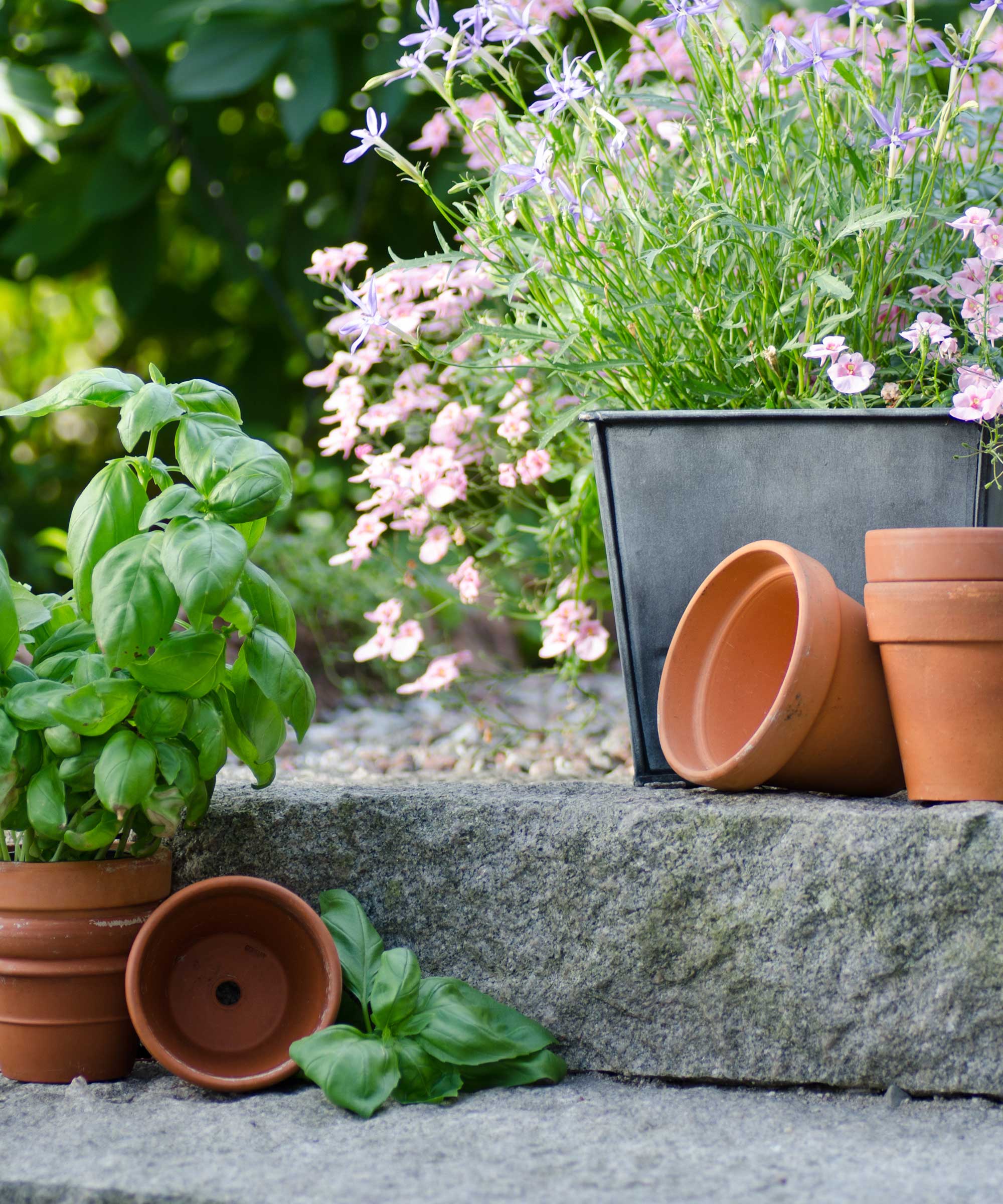
7 of the best basil companion plants
'Many think that basil is tricky because it is a tender annual as opposed to most herbs, which tend to be rugged perennials,' explains Kate Russell, an experienced vegetable gardener, gardening blogger, and author.
'But basil is very rewarding, indoors or out.' Kate explains. 'It doesn't take up a lot of space and continues to produce throughout the growing season. When deciding what to grow with basil, it is important to keep in mind basil's sun, irrigation, and rooting needs. Basil needs full sun or partial shade to grow well. They also need the soil to dry out between frequent waterings. Too much water (and not enough air flow) often leads to fungal diseases and pest problems.'
'Plants that perform best around basil are those with deeper root systems and those that allow sunlight through and air to flow. Basil makes an excellent companion plant to asparagus, carrots, sweet peppers, and tomatoes. Asparagus beetles, carrot flies, and tomato hornworms don’t share our love of basil.'

Kate Russell helps others make the most of a landscape by incorporating delicious, attractive edible plants. She is the author of 'Stop Wasting Your Yard!', available at Amazon, and helped design and install an educational garden at Martial Cottle Park in San Jose, CA.
1. Tomatoes
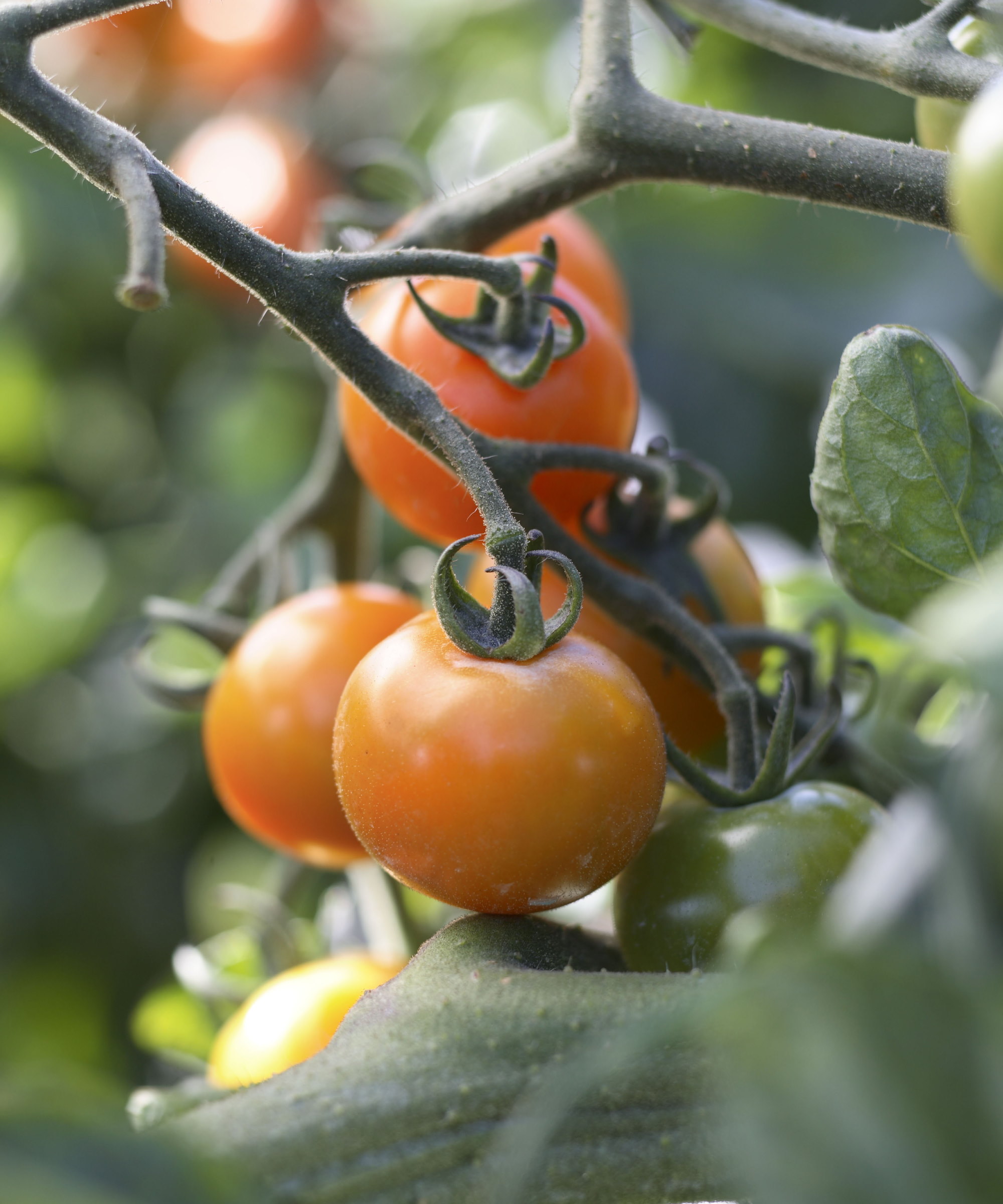
The sweetness of vine-ripened, glossy red tomatoes and the full-throttle aromatic hit of basil make for natural culinary partners. This duo is a match made in heaven, both in the kitchen and the garden, as they work best when planted together, maximising each other's potential.
Design expertise in your inbox – from inspiring decorating ideas and beautiful celebrity homes to practical gardening advice and shopping round-ups.
‘A time-tested classic pairing, basil is thought to enhance the flavor of nearby tomatoes and help repel tomato hornworms, whiteflies, and aphids. Their similar light, temperature, and watering needs make them ideal garden partners.’ says Robin Phelps, gardening and preserving coach and founder, Sow Many Plants.
Growing tomatoes is a joyous thing, and no store-bought tomatoes will come even close to those grown at home. Tomatoes are warm-weather plants and will not grow in temperatures below 50°F; as such, just like basil, tomatoes are well-suited to growing in a greenhouse or conservatory.

Robin Phelps is a Gardening and Preserving Coach, with a passion for nurturing green spaces and preserving the bounties of nature. With over 20 years of experience in gardening, Robin began her journey in a small apartment with a balcony and has since expanded to growing on 3 acres. She has evolved into an expert gardener and is eager to guide others on their gardening journey.
2. Peppers

If your local growing conditions allow (sweet peppers need warmth and a sunny position), learning how to grow bell peppers is well worth the time and effort, and is a particularly friendly and obliging neighbour for basil.
‘Both basil and peppers thrive in similar warm, sunny conditions with well-draining soil,’ says Robin. ‘Basil is believed to repel common pepper pests such as aphids, spider mites, and thrips.’
As is the case with all companion planting, it’s about give and get. ‘In return, peppers don’t compete heavily for nutrients, making them low-maintenance neighbors that allow basil to flourish,’ she adds.
If you are planning a greenhouse, these two plants are most definitely ones to add to your list.
3. Oregano

One of the very best aromatic herbs to grow in the garden is, without a shadow of a doubt, the optimistic and beautifully scented herb, oregano. Far superior to the dried, flaked herbs in a pot, cut fresh from the herb garden, oregano is simply a marvellous addition to culinary creations that always impress.
Happily, when you’re considering the tips and tricks for how to grow oregano, you will notice that the conditions in which oregano thrives are very similar to those which enable basil to flourish, so you can rest assured they will be perfectly happy bedfellows.
‘Oregano shares basil’s preference for full sun and well-drained soil,’ explains Robin. ‘As a low-growing herb, oregano can help suppress weeds around basil, and its pungent aroma is thought to further deter insect pests. Some gardeners also find that growing these herbs together enhances their flavors, too.’
4. Marigolds
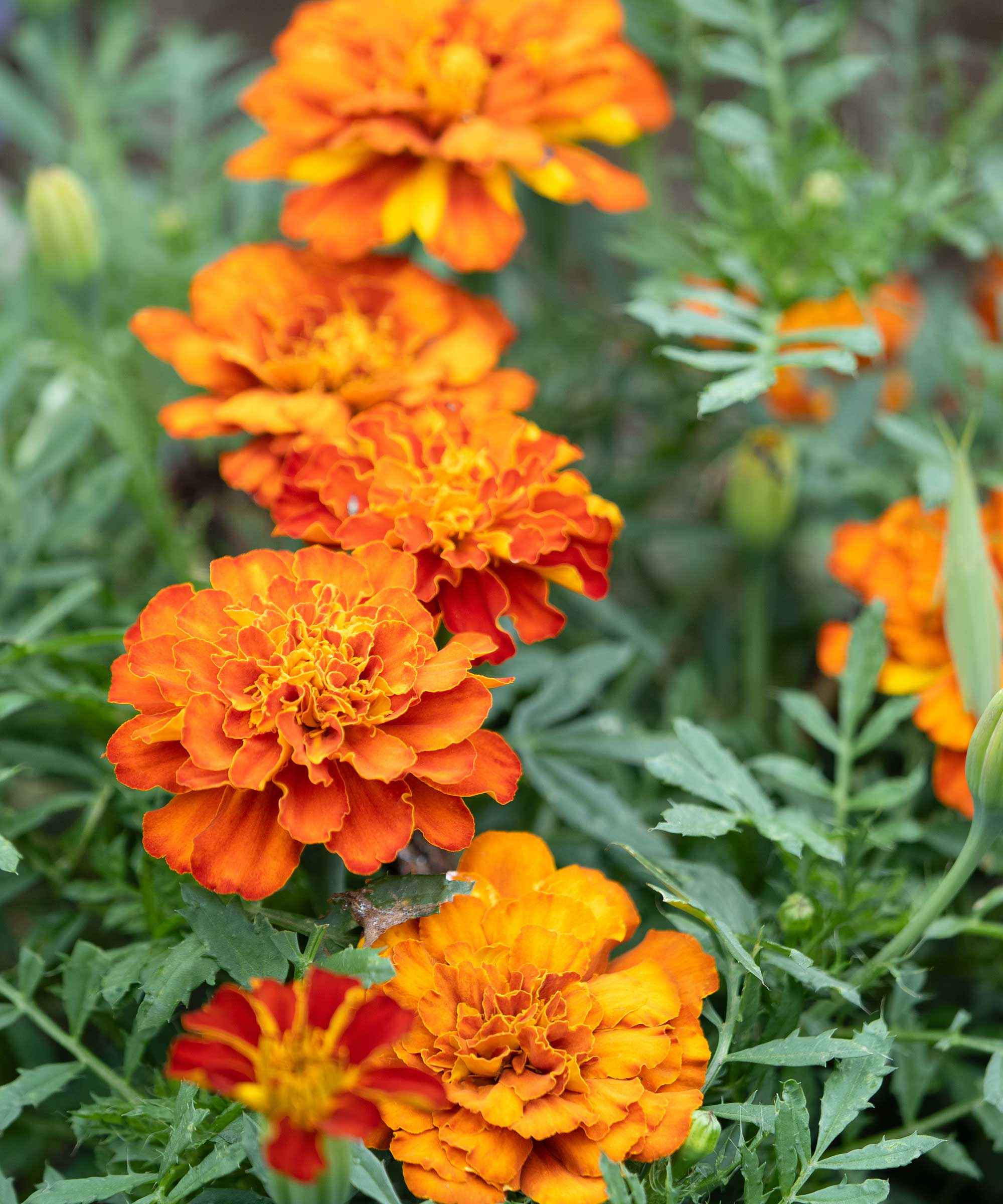
One of the best tools in any herb or vegetable gardener’s arsenal is the strategic placement of marigolds. What do they bring to the table exactly? The answer is two-fold; firstly, marigolds keep bugs away and are one of the best pest-repellent plants.
'Though not edible, marigolds are excellent companion plants due to their powerful pest-repelling properties, notes Robin. ‘Their scent confuses and deters pests like aphids, whiteflies, and nematodes, helping to protect basil and other nearby plants.’
When thinking about where to plant marigolds, consider about partnering them with basil; both are fantastic mosquito-repellent plants, and marigolds attract pollinators and beneficial insects like ladybugs, which feed on harmful pests, so basil will be very well protected.
Growing marigolds with tomatoes is a known, tried, and tested method of improving your tomato crops, too, and by adding basil to the mix, you have a heavenly scented, wonderfully protected, and abundant summer display and crop.
5. Chives
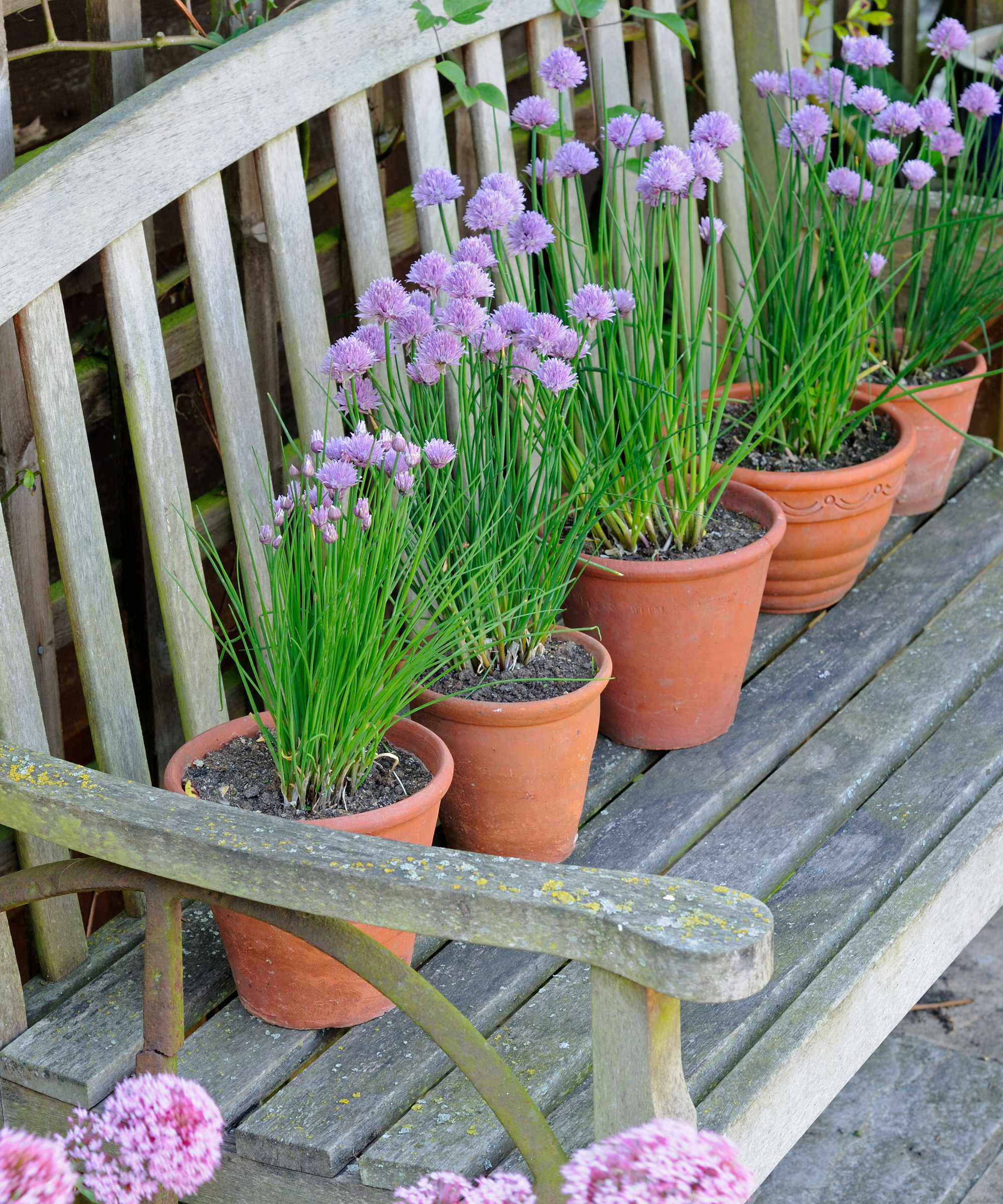
On the whole, chives are a fairly trouble-free perennial herb and easy to grow and care for. Not to mention, the pretty chive flowers that look so attractive, and a beautiful garnish for summer suppers.
If you’re wondering how to grow chives, its worth noting that their ideal planting position would be in full sun or light shade and well-draining, fertile soil. As such, chives and basil are a very contented duo.
‘Chives and basil get along well in the garden,’ says Robin. ‘Chives emit a mild onion scent that can deter aphids, Japanese beetles, and other insect pests that might otherwise target basil. Also, chives attract pollinators when they flower, which can benefit your garden ecosystem overall.’
Both chives and basil are ideally suited to herb planter ideas, and look beautiful together throughout the summer too, with the bees buzzing around the chives’ blooms and the zesty summer scent of the basil as you brush past it. Heavenly!
6. Asparagus

‘These two crops benefit each other,’ says Drew Swainston, a professional gardener with a wealth of experience in growing crops for restaurants. 'The basil repels the asparagus beetle thanks to its strong aroma, while the asparagus attracts a lot of ladybugs, which eat aphids, which commonly cause problems for basil.
'It’s such a mutually beneficial relationship, and it highlights how key companion planting can be for happy plants.'
If you find yourself scratching your head wondering how to grow asparagus, it is worth bearing in mind that if you are not blessed with the virtue of patience, it might not be the best vegetable for you.
The asparagus-growing season is short, during a short spring to early summer window from May through June, and you won’t reap the best harvest for three or four years after planting.
If you adore this seasonal vegetable, though, and want to give it a go, plant it in spring once the risk of frost has cleared, and plant bare-root crowns (you can grow from seed if you wish, but it adds a whole extra year to the growing cycle).
7. Lettuce

If you're searching for something altogether much easier to grow and manage, lettuce is a wise choice. There is something romantic and nostalgic about harvesting lettuce, and homegrown is wildly superior to the plastic-wrapped store-bought specimens. It's ready to harvest in as little as six weeks, so no thumb twiddling required.
‘Lettuce and basil make a great seasonal pairing,’ notes Robin. ‘Lettuce prefers cooler temperatures and partial shade, which basil can help provide as it matures and spreads. Basil’s upright growth also helps conserve space in small gardens or container plantings. Since lettuce grows quickly and is harvested early, it makes room for basil as it gets larger through the season.’
Knowing how to grow lettuce well relies on sowing seeds every few weeks, so you have a continual supply to harvest. If you're planting your lettuce and basil together somewhere warm, it would be wise to choose lettuce varieties that are more heat tolerant, such as the well-known, old-fashioned butterhead, with its cabbage-like leaves, or loose leaf.
What should you not plant next to basil, and why?
While basil is a friendly companion to many plants, there are a few it doesn’t play well with, usually due to conflicting growing needs or biochemical interactions that can stunt growth.
'Basil grows best alongside plants with similar needs: full sun, moderate moisture, and nutrient-rich, well-drained soil. Avoid pairing it with plants that prefer dry or heavy soil, have vastly different watering requirements, or release compounds that could interfere with basil’s growth,' Robin advises.
I asked Robin which plants we should steer clear of when choosing basil companion plants.
Rue: Rue and basil have a well-documented antagonistic relationship. Rue contains compounds that can inhibit the growth of nearby plants, including basil. Though it’s valued for its ability to deter pests, rue’s allelopathic properties (natural chemicals that affect neighboring plants) make it a poor companion for basil, often leading to stunted or unhealthy growth.
Sage: These two herbs have opposing preferences in the garden. Basil likes rich, moist soil and regular watering, while sage thrives in dry, sandy soil and is prone to root rot if overwatered. Trying to accommodate both plants in the same bed usually results in one struggling, most often basil, which is less tolerant of drought conditions.
Cucumbers: Though not toxic to one another, basil and cucumbers can compete for resources and space, and some gardeners report that nearby basil has inhibited their cucumbers' growth. Cucumbers require consistently moist soil and, as such, can become stressed when grown next to basil, which prefers more airflow and less humidity around its leaves.
Fennel: Fennel is an allelopathic plant that releases chemicals into the soil to inhibit the growth of nearby plants. Basil, already somewhat temperamental, will likely be damaged by fennel's unwelcoming signals. Although fennel is exceedingly pretty, with its delicate, feathery leaves, but best kept away from basil at all costs.
Perhaps the most rewarding way to grow basil is to grow it from seed. It is also wonderfully economical and quick. Purchase some basil seeds like these from Amazon, and sow them in small pots of moist peat-free multi-purpose compost, like this compost available at Amazon, which is ideally suited to propagation and germination.
Cover gently with a thin layer of vermiculite, and put in a propagator. If you are just starting, you don't need anything complicated or overengineered; this simple and modestly priced propagator available on Amazon will do the job perfectly.

Sophia Pouget de St Victor is the UK Content Editor at Homes & Gardens, bringing readers the latest trends, expert insights, and timeless design inspiration tailored to a UK audience. With a background in luxury interiors and a qualification in Garden Design from London, she has a passion for creating spaces with character and emotional depth. Sophia gravitates toward interiors that defy definition, valuing individuality and effortless elegance. She lives in West London with her partner, two mischievous terriers, and a plump cat named Lettuce.
You must confirm your public display name before commenting
Please logout and then login again, you will then be prompted to enter your display name.